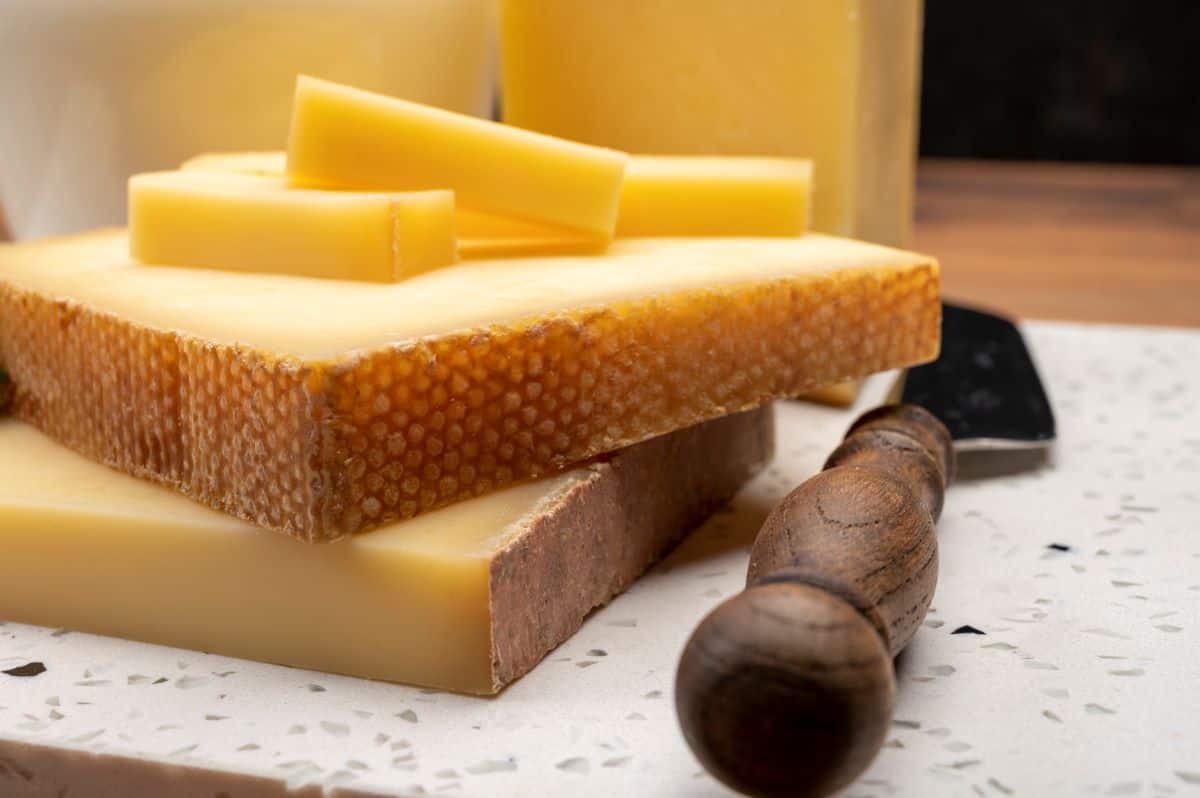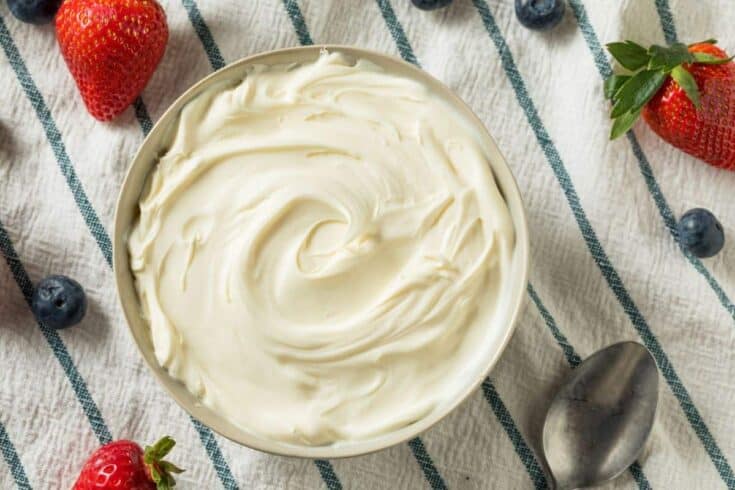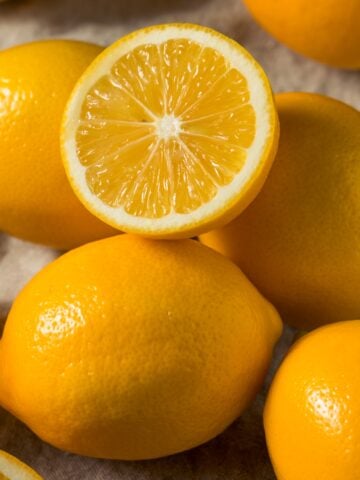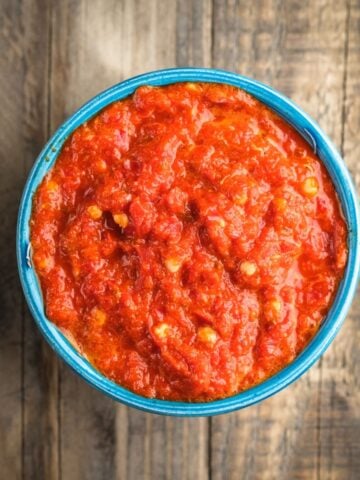Swiss cheese is not a specific type of cheese but rather any style of cheese made in Switzerland. Often Swiss style cheese is known for its “holey” appearance as well as its mild and unique nutty taste.

If you are wondering what kind of options there are for a good Swiss cheese substitute if you don’t happen to have any of it around, read on. I’ve come up with a few options that will do just fine when you’re in need of a substitution for Swiss cheese.
WHAT CHEESE IS CLOSEST TO SWISS CHEESE?
If you are shopping at your grocery store and stop in the cheese section, you will likely see a Swiss cheese that is emmental, the most commonly known type of Swiss cheese. Emmental cheese is made from cow’s milk and has a mild flavor and semi-hard texture.
While this is the most well known Swiss cheese, there are several lesser known cheeses that are also produced in Switzerland:
- Gruyere
- Tete De Moine
- Vacherin Fribourgeois
- Scharfe Maxx
- Sbrinz
Not all of these cheeses have the same flavor characteristics of emmental, but are definitely worth trying if you have the opportunity to check them out.
IS LORRAINE CHEESE SWISS CHEESE?
Lorraine cheese is a style of Swiss cheese known for its small holes and lacy appearance. It is sometimes referred to as Lacy Swiss and is one of three types of Swiss cheese produced in the United States. In addition to Lacey Swiss, aged Swiss and Baby Swiss are also produced in the United States, and not Switzerland.
Lorraine cheese is made with low fat milk, and has a mild taste, while Baby Swiss and aged Swiss are both made with whole milk. Baby Swiss has a creamier and mild savory taste due to the high fat content. Aged Swiss, however, has the strongest flavor of the three because the ageing process enhances the flavors. Aged Swiss is a fuller bodied cheese with a nutty taste and hard texture.
WHAT IS ANOTHER NAME FOR SWISS CHEESE?
Emmental is generally considered to be the classic example of a Swiss cheese. If you were to look for a Swiss cheese at the cheese counter in your grocery store, emmental would likely be the cheese that was suggested to you instead of other cheeses.
Would you like to save this?

5 Swiss Cheese Substitutes
When looking for a Swiss cheese substitute, consider what you are looking for. Swiss cheese tends to be meltable and quite versatile, but depending on the recipe you may want to go with one substitute instead of another. Here is my list of best Swiss cheese substitutes.
Cheddar cheese is an all around popular cheese, and for good reason. Made of cow’s milk, cheddar cheese originated in England, in the village of Cheddar. Cheddar’s delicious flavor and great melting properties makes it a great substitute for Swiss Cheese.
Cheddar cheese starts as a semi-hard cheese and becomes hard and crumbly in texture over time. It goes from mild to a strong flavor during the ageing process. Cheddar cheese is high in protein and very delicious.
Try cheddar cheese melted into a grilled cheese sandwich on slices of hearty bread. Cheddar is also a worthy component for cheesy tots or macaroni and cheese, giving it gooey texture and lots of flavor.
Another substitute for Swiss cheese is Gouda. Gouda is a dutch cheese from Holland. It is known for its creamy texture and is one of the most popular cheeses in the world.
Gouda is a cow’s milk cheese and can range in age from one month to 36 months, making the flavor profile and texture different. When young, gouda is a soft cheese with a mild flavor that melts nicely and is often used in cheesy dips like fondue. When gouda becomes more aged, the texture becomes harder, having a salty butterscotch undertone and crunchy texture from the cheese crystals that form over time.
Try aged gouda alongside a fine chocolate or dried fruit on a cheeseboard. Young gouda blends well into soups and cheesy sauces and is one of my favorite substitutes for swiss cheese.
Mascarpone cheese is a soft Italian acid-set cream cheese from the Lombardy region, often used in different dishes to add a creamy texture. Mascarpone is made by adding lemon juice to heavy cream, allowing it to curdle and then passing it through a cheesecloth to separate the liquids from the solids.
While mascarpone is not the same texture as Swiss cheeses are, it can be used in recipes that may require creamy addition, such as sauces or pasta. Since it also has a mild flavor like Swiss cheese, this particular cheese works as a substitute in some situations.
Mascarpone is a delicious cheese that is definitely worth adding to your grocery list. The most classic use of mascarpone is in the dessert tiramisu, but it also adds nice flavor and texture to creamy risotto.
Fontina cheese is another Italian cheese made that works as a substitute for Swiss cheese. Semi-soft to hard in texture, depending on its age, fontina cheese has a mild to medium flavor that works in lots of dishes. Like most Swiss cheeses, fontina also has a nutty flavor that is a delicious flavor component.
Originating in the Aosta Valley of Italy where it is made from raw cow milk, fontina cheese is made differently in other parts of the world, resulting in a slight difference in the end product. The original cheese has a pungent aroma and flavor, unlike how it is made in other parts of the world.
Fontina works well in lots of recipes, but really stands out in a homemade fontina cheese dip, or melted into fondue. As far as substitutes for Swiss cheeses go, fontina is a great option.
Mozzarella cheese is a pasta filata style cheese made from cow’s milk or buffalo milk. Originating in Southern Italy, it was originally only made with buffalo’s milk. Mozzarella cheese is a mild cheese known for its stringy appearance and meltability. Like Swiss cheese, mozzarella is lower in fat and calories.
Fresh mozzarella has a high moisture content, while low moisture mozzarella tends to be harder and easier to grate. Both versions of the cheese are great for cooking, but they work better in certain recipes individually.
Mozzarella is known for its appearance in several delicious dishes such as bruschetta, pizza, lasagna, and mozzarella stuffed chicken. While it is great melted, it can also be eaten raw with sliced tomato and basil to really appreciate its delicate flavor.
Check out this Ham and Cheese Pasta, which any of the above mentioned cheeses will work with beautifully.










Make my day! - Share your thoughts...